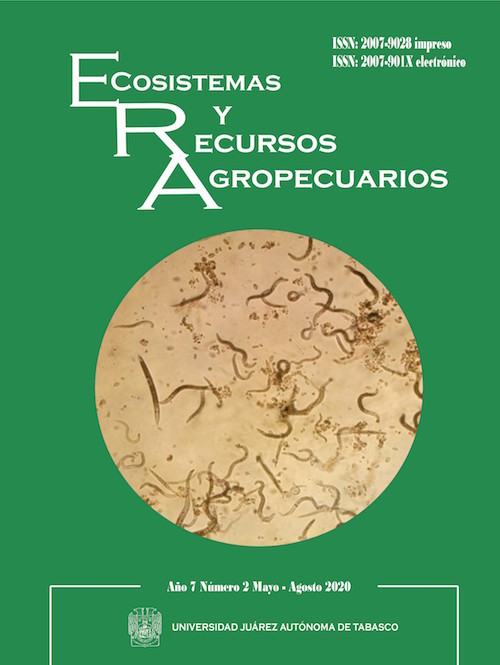Urbanization and its relationship with urban heat island in Tuxtla Gutiérrez, Chiapas
DOI:
https://doi.org/10.19136/era.a7n2.2485Keywords:
cambio de uso de suelo, crecimiento urbano, MM5, relieve, temperatura del aireAbstract
Land use change is one of the most complex problems observed as part of the urban expansion process. It generates different consequences such as the Urban Heat Island (UHI) development. With the objective of identifying the presence of UHI in Tuxtla Gutiérrez, Chiapas, MM5 meteorological model was implemented to simulate the meteorological conditions for April 30th to May 6th, 2017. Considering the atmospheric conditions over the study area, the UHI was represented at different times of May 3rd, 2017. The results show the formation of the UHI over the city at different hours during the day. The UHI intensity varies from 0.5 to 2.5 ◦C but, it could be higher than 5 ◦C. The UHI affects mainly the center of the city as a consequence of factors such as soil properties, heat fluxes, and the geomorphological characteristics of the study area. Furthermore, considering the actual growth of the city, land use change was simulated. In some cases, the results show a bigger area and a higher intensity of the UHI phenomenon. Therefore, the presence of the UHI in the city is showed and the importance of the protection and conservation of green areas is indicated, which points out that UHI studies should be considered as part of territory planning for urban development.
Downloads
References
Bokwa A, Hajto MJ, Walawender JP, Szymanowski M (2015) Influence of diversified relief on the urban heat island in the city of Kraków, Poland. Theoretical and Applied Climatology 122: 365-382.
Casillas-Higuera A, García-Cueto R, Leyva-Camacho O, González-Navarro F (2014) Detección de la Isla Urbana de Calor mediante Modelado Dinámico en Mexicali, B.C., México. Información Tecnológica 25: 139-150.
Colunga ML, Cambrón-Sandoval VH, Suzán-Azpiri H, Guevara-Escobar A, Luna-Soria H (2015) The role of urban vegetation in temperature and heat island effects in Querétaro city, México. Atmósfera 28: 205-218.
Córdova K (2011) Impactos de las islas térmicas o islas de calor urbano, en el ambiente y la salud humana. Análisis estacional comparativo: Caracas, octubre - 2009, marzo - 2010. Terra Nueva Etapa 27: 95-122.
Fuentes CA (2014) Islas de calor urbano en Tampico, México. Impacto del microclima a la calidad del hábitat. Nova Scientia 7: 495-515.
García-Cueto OR, Jáuregui-Ostos E, Toudert D, Tejeda-Martínez A (2006) Detection of the urban heat island in Mexicali, B. C., México and its relationship with land use. Atmósfera 20: 111-131.
Giannaros TM, Melas D, Daglis IA, Keramitsoglou I (2014) Development of an operational modeling system for urban heat islands: an application to Athens, Greece. Natural Hazards and Earth System Sciences 14: 347–358.
Ilhamsyah Y (2012) A Mesoscale Meteorological Model of Modified Land Cover to the Effect of Urban Heat Island in Jakarta, Indonesia. Aceh International Journal of Science and Technology 1 (2): 60-66.
Jáuregui E (2000) El clima de la Ciudad de México. 1ª Edición. Plaza y Valdés Editores. Ciudad de México, México.131p.
Silva M, García A, Hernando A (2015) Crecimiento de la mancha urbana en la Zona Metropolitana de Tuxtla Gutiérrez (Chiapas, México). Quehacer Científico en Chiapas 10 (2): 35-41.
Downloads
Published
Issue
Section
License
Aviso de copyright
Los autores que se envían a esta revista aceptan los siguientes términos:
una. Los autores conservan los derechos de autor y garantizan a la revista el derecho a ser la primera publicación del trabajo con una licencia de atribución de Creative Commons que permite a otros compartir el trabajo con un reconocimiento de la autoría del trabajo y la publicación inicial en esta revista.
B. Los autores pueden establecer acuerdos complementarios separados para la distribución no exclusiva de la versión del trabajo publicado en la revista (por ejemplo, en un repositorio institucional o publicarlo en un libro), con un reconocimiento de su publicación inicial en esta revista.
C. Se permite y se anima a los autores a difundir su trabajo electrónicamente (por ejemplo, en repositorios institucionales o en su propio sitio web) antes y durante el proceso de envío, ya que puede conducir a intercambios productivos, así como a una cita más temprana y más extensa del trabajo publicado. (Consulte El efecto del acceso abierto).


